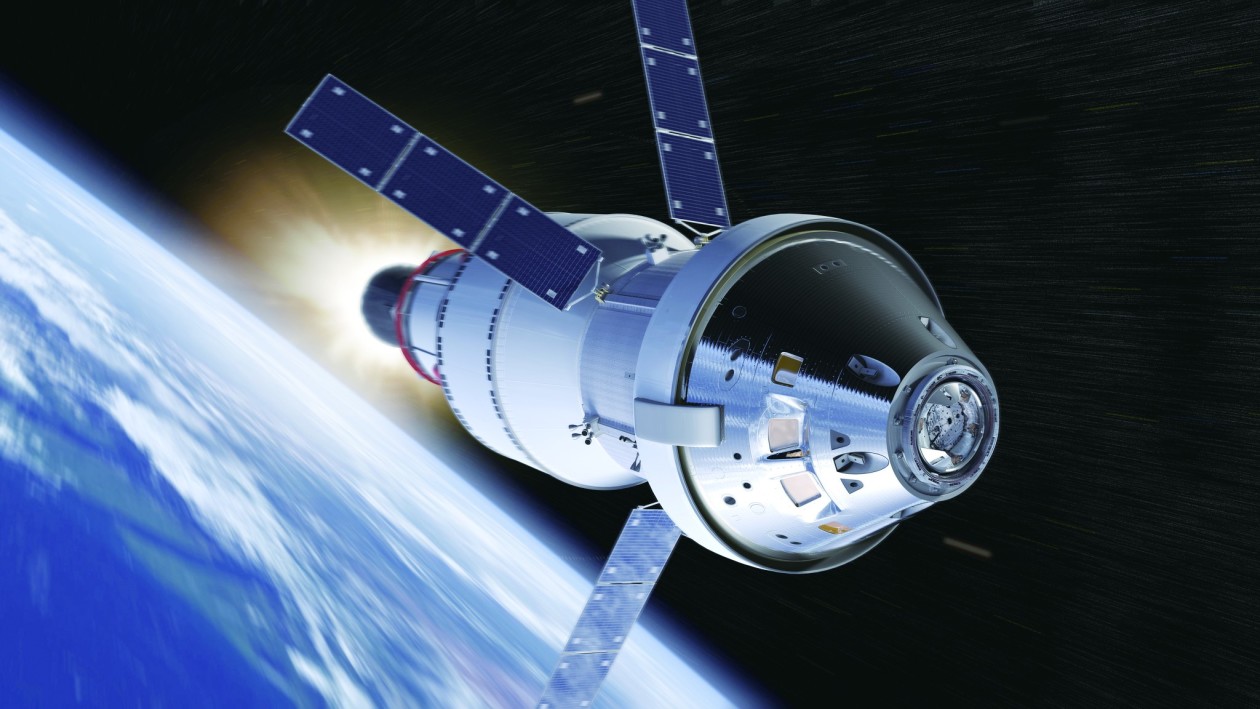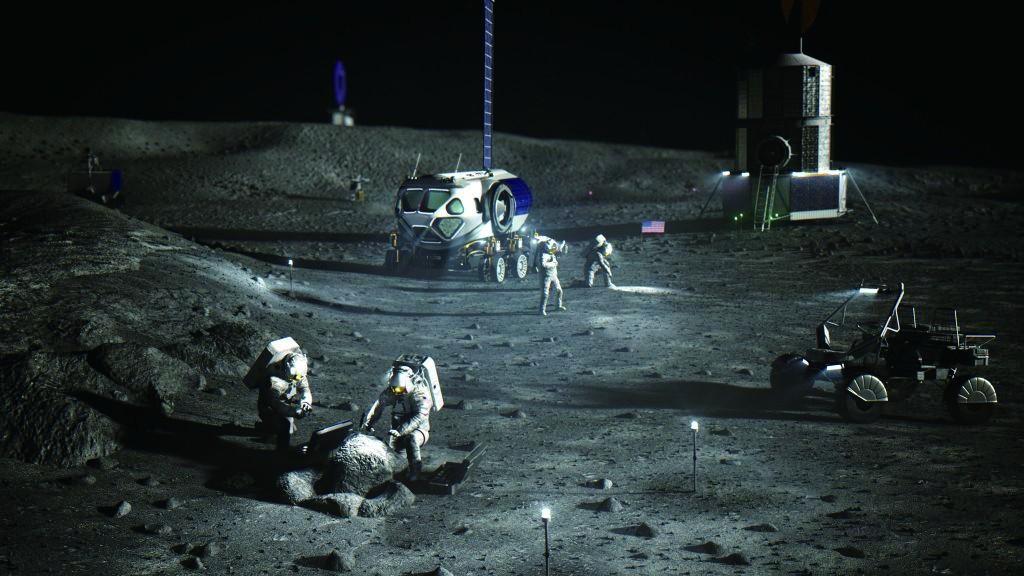The super rocket launch is delayed at least 16 times. Why is the United States return to the moon?
Author:Global Times Time:2022.08.31
[Global Times Special Reporter Chenyang] The first step in the United States who has received much attention to the United States returning to the moon- "Artemis 1" unmanned surrounding the moon task because of the technical failure of the "Space Launch System (SLS)" heavy rocket Failure to launch on August 29 as scheduled. The American scientific and technological community generally has a "unexpected" attitude towards the launch, because the rocket and even the "Artemis" plan that returned to the moon has repeatedly delay. Why is the trip to the United States return to the moon so hard?

"Orion" manned spacecraft concept map

"Artemis Base Camp" moon base imagination
Super Rocket launches at least 16 times
The SLS rocket delayed this launch is the core of the United States' return to the moon, but the procrastination disease has been repeatedly occurred during its development. The first launch time has been postponed from 2022 in 2016, causing serious costs to exceed the standard. NASA Supervisor's Office warned "The launch cost of SLS is too expensive and unsustainable."
During the launch preparation on the 29th, the SLS Rockets were not smooth. Initially, the transmitted rack was frequently attacked by lightning, resulting in the fuel injection operation for nearly two hours later than the scheduled time. During the fuel injection process, the problem of liquid hydrogen leakage occurred at a time. In the end, NASA was temporarily resolved after the "restart" fuel injection process.
But since then NASA has discovered that the main engine of the SLS rocket has failed. According to the design, the four main engines need to be cooled to the predetermined temperature in advance, but the No. 3 engine can never meet the conditions for launch. After intense repair, NASA canceled the launch process in the last few minutes.
NASA said there were two opportunities for launch on September 2 and 5. But American aerospace observers Eric Berje said NASA has never completely solved the technical problems of SLS rockets. Since April this year, NASA has conducted four "wet color" tests. During this period, the SLS Rockets drilled the whole process of 10 seconds from the additional fuel to the engine to ignite to check whether there were hidden dangers. However, these four tests have ended in advance, and the closest to success is only 29 seconds before the launch. Because the "Wet Line" test was repeatedly interrupted due to failure, NASA adopted the "cheating" method to test whether there was a problem in the second half of the launch process. In the fourth "Wet Color Volleyball" test, a seal leak occurred, but in order to complete the test, NASA chose to block this problem through the computer program and continue the follow -up test. As a result, the steps of detecting the engine cooling were skipped. He said, "If NASA is executed according to the process, it is likely that the problem that causes launch on the 29th has already been found." In addition, the leakage problem in the launch has appeared many times as early as the "Wet Color Vol." It proves that NASA has not completely eliminated this hidden danger.
Since the problem of the engine failure encountered by the SLS Rockets is the first time, it is unknown whether NASA can solve it in just a few days. If the Rockets cannot complete the launch by September 5, it is necessary to return to the assembly building for additional operations, which means that the rocket's launch is delayed again until mid -October.
According to the US "Space" website reported on the 29th, the reason why NASA was in a hurry to prepare for launch without completing the complete "wet color row" test without the SLS Rockets. The fundamental reason was that its progress was serious. It is reported that SLS Rockets are not re -developed. In 2005, the Bush administration proposed an ambitious "constellation" plan to prepare to use the newly developed "God of War" rocket to send the "Orion" spacecraft to the moon and Mars. However, in 2010, the Obama administration announced that the "constellation" plan was released on the grounds of insufficient funding and slow progress. In order to maintain the US -manned space -on capabilities, NASA confirmed the development of the SLS rocket in 2011. It uses a large number of aerospace aircraft mature technology. For example, the RS-25 engine used by SLS comes from the remaining inventory when building a spacecraft. Its two solid rockets are also an improved enlarged version of the spacecraft booster.
However, it is difficult for the outside world to understand that the SLS rocket with a large number of mature technologies is dragged in the development progress. The "Space" website said that the SLS Rockets were expected to fly at the end of 2016, but affected by many factors such as budget issues, design changes, and political obstacles, the first flight time changed at least 16 times, and it was delayed to 2022.
According to the "Space" website, the report released by the Office of NASA's Office in November 2021 shows that the development and construction costs of SLS Rockets have skyrocketed, and the initial development budget is US $ 10 billion, but now only the R & D budget has reached 36 billion US dollars. This is not an additional cost of $ 4.1 billion each time. The report severely criticized that "SLS launch costs are too expensive and are not sustainable."
The U.S. media have discussed so slowly why the SLS Rockets developed so slowly. It is generally believed that this is related to NASA and traditional American space companies lack innovation and bureaucracy, the repeated changes in the White House space policy and the decline of the American aerospace supporting industry. NASA has repeatedly stated that it is necessary to learn the innovative spirit of private aerospace companies such as SpaceX, and hand over the development task of the manned moon lander to the "Star Ship" project of SpaceX. The "Space" website also stated that if the "Star Ship" can achieve high -intensity launch as planned, the official "Artemis" plan may be canceled. The manned spacecraft is also an unknown
The complete "Artemis" program includes six major components: SLS Rockets, "Orion" manned spacecraft, exploring ground system, manned moon landing system, "portal" moon track space station and "Artemis base camp" moon. base. The most critical "Artemis 1" to the United States to return to the Moon Plan to the "Artemis 4" task mainly involves the first four parts, but the "Orion" manned spacecraft and manned moon landing system can be completed as scheduled. There are also many unknown.
According to the official website of NASA, as a new generation of manned spacecraft in the United States, the "Orion" spacecraft can accommodate 4 astronauts and perform deep space detection missions to the International Space Station, the moon and even Mars. The Broadcasting Corporation said that the "Orion" spacecraft is very similar to the "Apollo" manned spacecraft equipped with 3 astronauts to the moon 50 years ago, but the "Apollo" spacecraft will only stay in space for a few days, and the "Orion" will be "Orion". The spacecraft is expected to fly for at least 21 days. After the manned "Dragon" spacecraft and Boeing's CST -00 spacecraft developed by the American SpaceX company, the narrow living environment of the "Orion" spacecraft caused a lot of complaints. In the first impression of the US astronauts Steve Baowen talked about the first impression of the "Orion" spacecraft: "It's too narrow, it is really crowded for four people."
And NASA insists that unlike the manned "Dragon" spacecraft and CST-100 spacecraft that perform near-ground track mission, the "Orion" spacecraft will be responsible for long-term deep-space detection tasks. Therefore, safety and reliability must be placed in the first place , Comfort can only be rowed back.
Another reason why the "Orion" spacecraft was criticized was that it started the development work as early as 2006, and it was not equipped with the "Delta IV" rocket for the first time in 2014. This time with SLS, it is the second lift. It mainly tests the performance of its thermal cover, because the spacecraft will enter the earth atmosphere at a rate of 40,000 kilometers per hour, and must withstand the high temperature test of 2800 degrees Celsius.
According to the NASA plan, the "Artemis 3" mission will officially start the moon as early as 2025. The manned spacecraft who is responsible for sending the astronauts to the moon is the "Star Ship" of SpaceX. However, the "Star Boat" project is still under development, and so far, it has never officially entered space. When it has the ability to carry manned capacity, there is no clear timetable.
In addition, whether the space service required to land on the moon in the United States is not optimistic whether it can be completed on time. In 2021, Paul Martin, the director of the NASA director, acknowledged that "major delays in the development of the space clothes outside the cabin". NASA originally planned to produce two sets of "exploring motor devices outside the moon" before November 2024, but the aerospace uniforms would not be ready until April 2025, and it had to wait a few years to complete it.
U.S. Russia's evil affected space station plan
As the vision plan of the United States Moon Lunar Plan, the "Portal" Lunar Rail Space Station and the "Artemis Base Camp" lunar base are even more ambitious. However, the US "New Scientist" website said that whether these plans can be implemented in the end depend on international cooperation in the future.
Among them, the "portal" lunar track space station was jointly built by the United States, Russia, Europe, Japan, Canada, etc., of which Canada provides advanced robots; the European Space Administration is responsible for the international residential cabin, the scientific load deployment of science and the cube satellite Residential components and logistics supplies. It will not only serve as a transfer station for human beings, but also serve Mars in the future. In the original design of NASA, the "Orion" spacecraft transported astronauts to the "portal" space station first, and then switched to the manned landing system and landed on the moon; when returning from the moon surface, first transferred at the "portal" space station, and then changed to change Return to the earth by "Orion". However, due to the delay in progress, the "portal" space station cannot join the "Artemis 3" mission. In addition, with the deterioration of US -Russian relations, the cooperation between the two countries has also announced the breakdown. The space station component plan that was originally responsible for transportation by Russia also needs to be revised.
The "Artemis Base Camp" Moon Base consists of the moon's topographic vehicle, the residential mobile platform (pressurized the moon vehicle), the lunar base residential cabin, the power system and the original resource utilization system. However, the plan is more expensive, and the uncertain factors are more.
- END -
Xinji ship has been on CCTV again!

On July 4th, Hebei Satellite TV's Hebei News Network aired the Secretary Mayor ...
Xinjiang Aksen Division: Dr. Aid Division to the next team to send health to border guards and soldiers
Video/Snapshot, T_100, F_JPG, M_fast Controls = Controls data-version/ueditor/video/mp4/20220629/1656506868519756.mp4 transcoding = 1 style = width: 400px; In order to fully grasp the